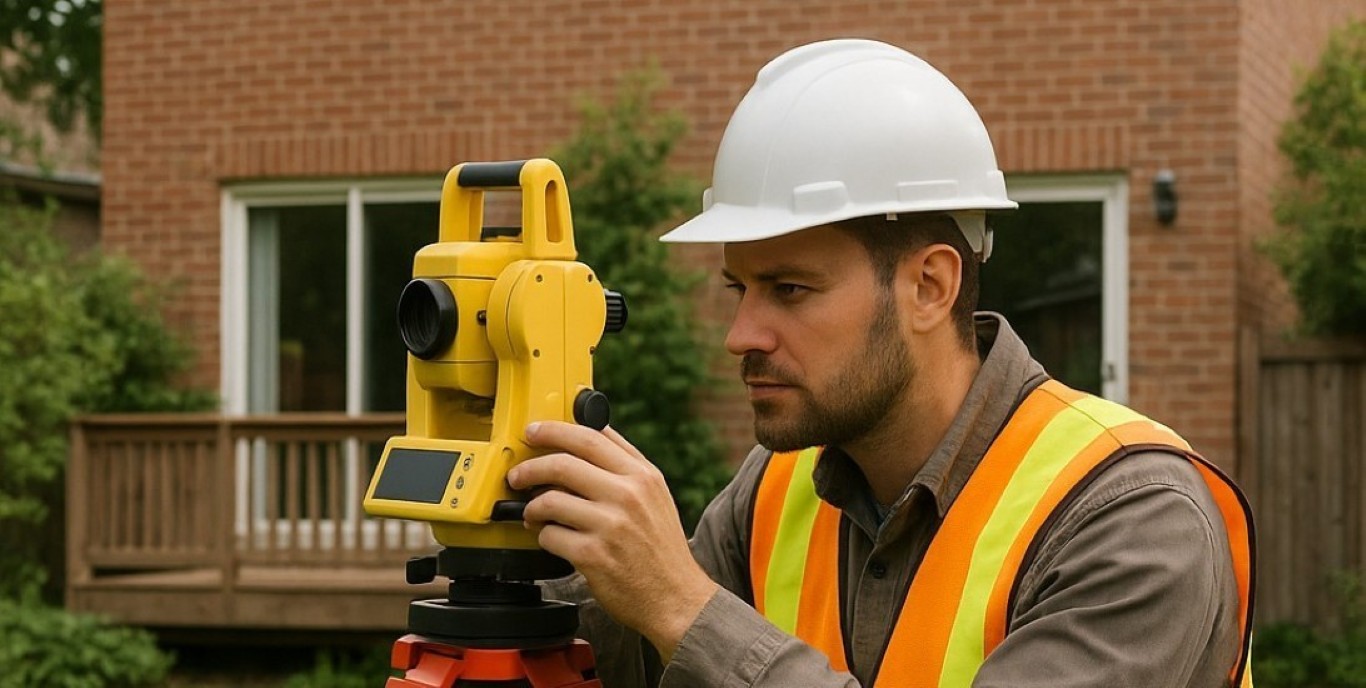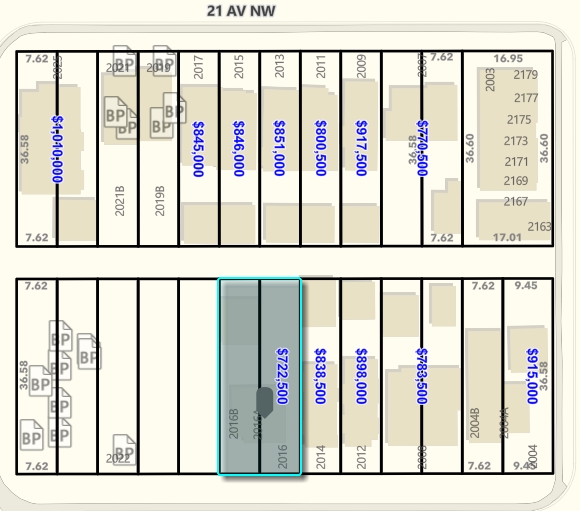Calgary Property Compliance Unpacked: Your Essential Guide to RPRs, Permits, and Avoiding Costly Surprises
USE OUR QUICK NAVIGATION GUIDE BELOW TO JUMP TO ANY POINT OF Calgary Property Compliance Made Simple:
- Why Property Compliance in Calgary Is a Bigger Deal Than You Think

- Let’s Start with the Certificate of Compliance (CoC)
- What a CoC Doesn’t Cover (This Trips Up a Lot of People)
- When Do You Actually Need a CoC?
- What Doesn’t Get Reviewed on a CoC?
- The Backbone of Compliance: Real Property Reports (RPRs)
- Why You Need a Current RPR First
- Getting an RPR Done
- Key RPR Submission Rules
- Permits: The Part Everyone Forgets (Until It’s Too Late)
- How to Check Permit History
- Risks of Skipping Permits
- How to Fix Unpermitted Work
- Encroachments: When Your Stuff Crosses the Line
- Are Encroachments Always Bad?
- How the Agreement Process Works
- Smart Moves for Homeowners & Real Estate Pros
- What If You Get Denied Compliance?
- Explore Your Property Details with Calgary’s “My Property” Tool
Why Property Compliance in Calgary Is a Bigger Deal Than You Think
If you're buying, selling, or working on a property in Calgary, listen up—understanding property compliance isn't just helpful, it's crucial. I’ve seen deals fall apart or get delayed because someone overlooked a missing permit or an outdated Real Property Report (RPR). And believe me, those last-minute surprises can cost you a lot—money, time, and stress.
This guide is your one-stop breakdown of Calgary's property compliance process. We’re diving into Real Property Reports (RPRs), Certificates of Compliance (CoCs), and permits—what they are, why they matter, and how to avoid nasty surprises.
Let’s Start with the Certificate of Compliance (CoC)
Think of the CoC like a stamp of approval from The City of Calgary saying, "Yup, your structures are exactly where they’re supposed to be according to the Land Use Bylaw."
But heads up: The CoC is based on a Real Property Report (RPR) done by a certified Alberta land surveyor. Without an accurate RPR, no CoC.
What a CoC Doesn’t Cover (This Trips Up a Lot of People)
It’s important to know—a Certificate of Compliance (CoC) doesn’t cover everything. It doesn’t look at whether the property meets building code, and it definitely doesn’t confirm if all the right permits were pulled or inspections passed. That’s on you to double-check. Before listing or buying, make sure all permits for any past work are closed out properly. It’ll save you from surprises and delays down the road.
When Do You Actually Need a CoC?
Now here’s the thing—a Certificate of Compliance (CoC) isn’t something The City of Calgary legally requires. It’s more of a service they offer, and they don’t get involved in private real estate deals. But don’t let that fool you. Most banks, lawyers, and even standard purchase contracts ask for it to protect their clients.
If you’re buying a property, always ask for a current Real Property Report (RPR) with a CoC. It helps make sure you’re not stuck dealing with someone else’s non-compliant additions. It’s also something lenders might ask for when you’re refinancing, or before you start new construction or renos—just to make sure everything already in place checks out.
What Doesn’t Get Reviewed on a CoC?
The CoC focuses only on building placement. It won’t assess things like:
-
Fences
-
Retaining walls
-
Driveway widths
-
Low patios (under 0.64m high)
-
Parcel coverage
-
Building height
-
Small sheds or pergolas under 10m²
But if any of these things stick out onto City property, expect them to be flagged for encroachment.
The Backbone of Compliance: Real Property Reports (RPRs)
An RPR is a bird’s-eye view of your property. It maps out every permanent structure in relation to legal boundaries: house, deck, fence, A/C unit, shed, you name it.
A Real Property Report (RPR) is basically your property's blueprint on paper. It’s done by a registered Alberta land surveyor and shows exactly where all permanent structures sit in relation to the legal boundaries. We're talking everything—house, deck, shed, fence, retaining walls, window wells, and yes, even your air conditioning unit. And it needs to reflect what’s actually there today, not what was there five years ago.
Why You Need a Current RPR First
No RPR, no CoC. It’s that simple. It’s the foundation for getting approval. RPRs don’t technically expire, but if any changes have been made to the property—like adding a deck, shed, or fence—it must be updated.
Getting an RPR Done
Hire an Alberta land surveyor. Shop around because rates can vary. And before the survey, remove anything temporary or not included in the sale. The report must reflect the actual, permanent layout of the property.
Key RPR Submission Rules
Here’s a common mistake I see—people trying to use old or altered RPRs, unclear sketches, or plot plans. That won’t fly. Only a certified Alberta land surveyor can update an RPR, and it’s got to be signed and dated. The City won’t accept anything less—and because of copyright laws, they also can’t give you a copy of a previous survey.
If the RPR shows “under construction” or just the foundation, that’s fine—but only if it’s been done within the last 12 months. And make sure the legal description and address match exactly, or you’re back to square one.
-
No marked-up or outdated copies
-
Must be signed and dated by the surveyor
-
City won’t provide old surveys due to copyright laws
-
"Under construction" reports are okay only if they’re less than a year old
-
The legal address must be 100% accurate
Permits: The Part Everyone Forgets (Until It’s Too Late)
Even if you have a CoC, that doesn't mean your property is fully compliant. Why? Because the CoC doesn't check if the right permits were pulled for any additions or renovations.
If Work Was Done Without Permits...
Ultimately, the homeowner bears responsibility for any previously concealed (unpermitted) work on their property. This liability persists even if a contractor provided assurances that permits were not necessary. No excuses here.
How to Check Permit History
-
For residential properties: Use the City’s myProperty tool (last 10 years)
-
For older work: Submit a property research request
-
For commercial/multi-res: Only the past 3 years are available online
Risks of Skipping Permits
-
City enforcement and fines
-
Forced removal of the unpermitted work
-
Issues during sale or insurance claims
-
Extra costs to bring things up to code later
How to Fix Unpermitted Work
If work was done without permits—don’t panic. You can still get it inspected, but you’ll need to pull the right permits first. That might mean opening up walls or ceilings so City inspectors can see the framing, plumbing, or wiring. Not ideal, but better than running into trouble during a sale.
Also, anything to do with electrical, plumbing, gas, or HVAC? That needs to be handled by a licensed contractor. Once they’re on board, they’ll assess what’s been done, pull the permits, and let you know if anything needs to be fixed to meet code. Then, you book the City inspection through 311 to wrap it up properly.
You’ll need to:
-
Get the proper permits
-
Possibly open up walls for inspections
-
Hire a licensed contractor (for trades like electrical, plumbing, HVAC)
-
Schedule inspections via 311
Encroachments: When Your Stuff Crosses the Line
What’s an Encroachment?
It’s when something on your property spills into City-owned land—think sidewalks, alleys, parks, or utility rights-of-way. FYI, issues between neighbors aren’t reviewed by the City for CoCs.
Common Encroachments
-
Sheds on Overland Drainage Right-of-Ways
-
Fences or planters on City land
-
Balconies or eaves overhanging public space
Are Encroachments Always Bad?
Not always. Some are allowed if you get an Encroachment Agreement. Others you may have to move or remove.
How the Agreement Process Works
-
Identify the encroachment
-
City assesses the situation
-
Submit your application
-
City reviews it
-
If approved, the agreement gets registered
-
Submit everything for Compliance again
Timing Tip: This process can take weeks. Start early if you’re in a real estate deal.
Smart Moves for Homeowners & Real Estate Pros
-
Order your RPR early—don’t wait until offer time
-
Always verify permits when buying
-
Don’t rely on the "grandfathering" myth—bylaws change
-
A home inspection is NOT a compliance check
-
When in doubt, talk to a pro
What If You Get Denied Compliance?
Common Issues
-
Projections too close to lot lines (e.g., eaves must be at least 0.6m from the side property line)
-
Decks higher than 0.6m need to be 1.2m from side property line and 7.5m from rear lot line
-
Privacy walls or porches too close to boundary
-
Detached buildings or sheds not meeting the required 1m separation from the main house or lot lines (for structures over 10m²)
Your Options
-
Remove or modify the structure
-
Apply for a Development Permit (relaxation)
-
Get a new or updated RPR
Explore Your Property Details with Calgary’s “My Property” Tool
Want a quick and easy way to check important details about your property? The City of Calgary’s My Property tool is a game-changer. Whether you’re a current homeowner or considering a new investment, this tool gives you access to zoning information, tax history, assessed values, and nearby amenities—all in one place. I use it regularly to help clients better understand what they’re buying into. Give it a try and get familiar with the full picture of your property today.
Bottom Line: Compliance = Peace of Mind
Whether you're buying, selling, or renovating, understanding Calgary's compliance rules helps you avoid major headaches. Know your RPR, check those permits, and handle any encroachments proactively.
Got questions or need help navigating this stuff? Let’s chat. I’m here to make sure your real estate experience is smooth, informed, and stress-free.
Thinking of making a move in Calgary? Reach out today at 403-988-0033 or email dusko@repyyc.com.

Dusko Sremac – Calgary & Area REALTOR®
With a background in construction and deep real estate knowledge, Dusko Sremac helps clients cut through the noise when it comes to property compliance in Calgary. From Real Property Reports to encroachments and permits, Dusko ensures buyers and sellers avoid costly surprises—and close deals with confidence. With over 1,500 families helped and a reputation built on trust and accuracy, you’re in good hands when the details matter most.
Cell: 403-988-0033 | Email: dusko@repyyc.com | Instagram: @DuskoSremac_REPYYC




Leave A Comment